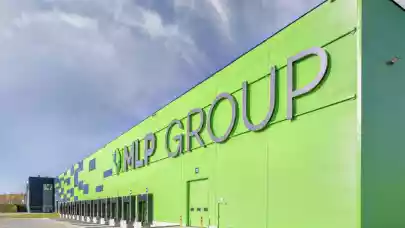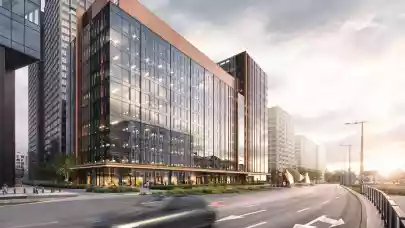
The Polish office market was booming until the pandemic struck. 2020 brought many changes and a downturn in developer and tenant activity. How is the market doing in the new environment it found itself in over a year ago? Real estate advisory firm Cresa has analysed the current levels of pre-lets and the office development pipeline in Poland.
At the end of the first quarter of 2021, Poland’s total office stock stood at 11.87 million sqm, of which 5.83 million sqm was in regional cities and 6.04 million sqm in the capital.
The first three months of this year saw eight office projects delivered in Warsaw whose construction commenced in boom years. These completions added a total of 167,100 sqm to the market, the largest volume of new office space coming on stream since the supply peak of 226,400 sqm in the second quarter of 2016. However, occupier demand was too weak for the new office supply to be absorbed. This was reflected in Warsaw’s vacancy rate, which rose to 11.4%, so the market’s response was similar to that recorded in 2016 when the city’s vacancy level surged to 15%.
“New supply growth on Poland’s eight key regional city office markets has, however, slackened considerably. They saw only 46,400 sqm of offices delivered in the first quarter of 2021, the lowest figure since the third quarter of 2015 when 43,900 sqm was completed. Meanwhile, the overall vacancy rate for the regional cities soared to 12.9%, the highest in ten years,” says Iga Kraśniewska, Research Manager, Cresa Poland.
Against a negative economic backdrop, developers have revised their plans for commencing new office projects, which has led to a downturn in construction activity. Last year, work began on only 14 new projects across Poland, including four in Warsaw and three in Krakow.
At the end of the first quarter of 2021, Poland’s office development pipeline stood at 1.2 million sqm compared to 1.7 million sqm in the same period last year, which was 33% higher. Of all Polish cities, Warsaw saw the sharpest decline in new office development to approximately 400,000 sqm, down by as much as 52%. Regional city office markets had close to 800,000 sqm under construction, which represents a 16% decrease year-on-year. Regional cities are expected to outpace the capital for total office stock in the coming quarters, with the fastest-growing markets being Katowice, where almost 200,000 sqm of office space is underway, and Poznań, which in the pandemic year saw construction work begin on two office projects totalling 106,000 sqm.
As 50 out of all the office buildings under construction in Poland broke ground in the pre-pandemic environment, the commercialization of their 965,000 sqm in aggregate is likely to be quite a challenge. Average pre-let ratios for office projects in Warsaw and regional cities stand at 40% and 26%, respectively. The rate of commercialization for office buildings under construction in each of the eight regional cities is still below 50%. However, some projects have already been 70% or even 100% let.
The decline in new office development in Poland, the sharpest in at least a decade, is likely to result in an undersupply in 2023-2024. It is notable that large global companies such as Google and JPMorgan are planning to adopt a hybrid model combining in-office work with remote working in varied proportions, a clear indication that employees will return to offices. Employees readily embraced working under the hybrid model and most companies have no intention of taking back this opportunity from them. A physical office will still be in demand, because not only does it provide a workplace, but it also fosters the sharing of know-how, ideas or solutions, and social bonding. This will be reflected in the requirements of tenants who will consider new factors when choosing office space.
“We expect the office market will begin to recover in the second half of 2021 amid rising pre-let ratios for buildings under construction. It is important to note that developers have secured lands on which they are ready to deliver modern and visually attractive mixed-use projects. Such developments, with a focus on placemaking, are likely to contribute to creating diverse urban spaces,” concludes Iga Kraśniewska.



